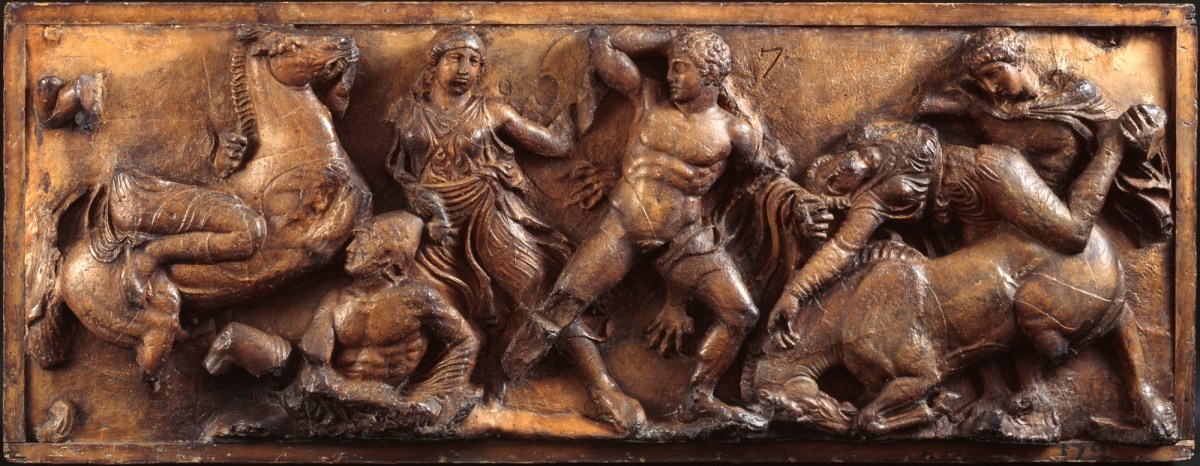
Unidentified sculptor, Herakles fighting an Amazon., c. 420-400 B.C..
Painted plaster cast. 720 mm x 1860 mm x 220 mm. © Photo: Royal Academy of Arts, London. Photographer: Paul Highnam.
This image is not available to download. To licence this image for commercial purposes, contact our Picture Library at picturelibrary@royalacademy.org.uk
Herakles fighting an Amazon., c. 420-400 B.C.
After Unidentified sculptor
RA Collection: Art
This cast is of part of the frieze from the Temple of Apollo Epikourios ('Apollo the Helper'), Bassae, southwest Arcadia, Greece. The complete frieze ran around the main room of the temple. It depicted two battles, one between the Lapiths and the Centaurs (West and North), the other between the Greeks and the Amazons (East and South).
This section from the South frieze was positioned opposite the doorway, which entered from the north. It shows Herkales wielding his club against Hippolyta, the Amazonian Queen.
The British Museum purchased the frieze, often referred to as the 'Phigaleian marbles', in 1814 and it entered the collection the following year. This cast is one of a set commissioned by the Royal Academy under the direction of Richard Westmacott RA in 1816.
The Temple of Apollo Epikourios ('Apollo the Helper') at Bassae (Phigalia) in southwest Arcadia, Greece was built between 420-400 BC by the architect Iktinos. A sculpted Ionic frieze of 23 slabs ran around the interior of the main room (cella) of the temple. It showed three battle scenes, the Trojan Amazonomachy, the Herakleian Amazonmachy, and the Centauromachy.
In the summer of 1811 Carl Haller and R.C. Cockerell noticed these panels by chance, supposedly while peering down a fox hole. Haller returned to excavate in 1812. In 1814, the British Museum purchased all of the slabs. Under the direction of Richard Westmacott RA in 1816, the Royal Academy commissioned casts of the complete frieze. Sixteen of the 23 casts are still today at the Academy.
Object details
720 mm x 1860 mm x 220 mm
Start exploring the RA Collection
- Explore art works, paint-smeared palettes, scribbled letters and more...
- Artists and architects have run the RA for 250 years.
Our Collection is a record of them.



